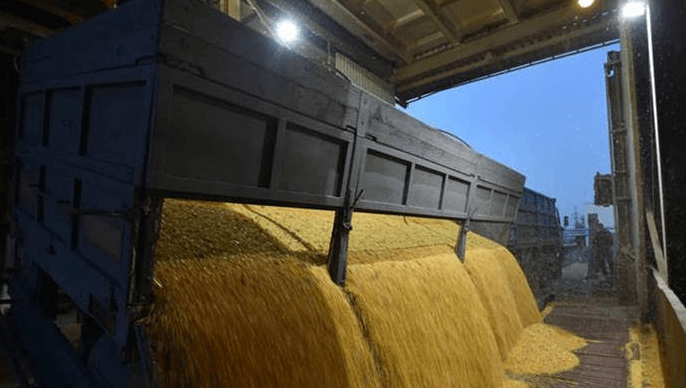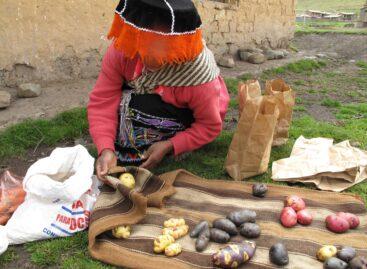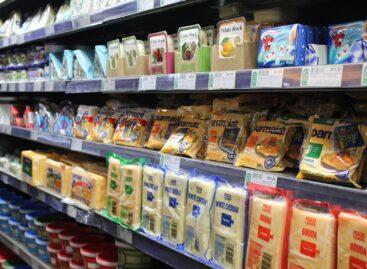FAO: Declining international prices to ease food import burden for poorest countries
Declining international agricultural commodity prices should ease the bill the world’s poorest countries pay for food imports, although the strengthening U.S. dollar poses “serious concerns”, a new United Nations report says.

Worldwide food imports are likely to reach $1.467 trillion in 2018, 3.0 percent above the previous year’s level but slightly down from the July forecast, according to the Food Outlook, a semiannual publication by the Food and Agriculture Organization (FAO).
Declining prices for coffee, tea, cocoa and sugar are easing global import costs, although the rising freight charges are expected to offset that effect. For Least-Developed Countries (LDC) and Low-Income Food-Deficit Countries (LIFDC), sharp drops in the international price of sugar are offsetting rising costs for imported vegetables and cereals.
Broadly speaking, the outlook for global food supplies in the coming year remains in line with earlier assessments, with robust production prospects and inventory levels taming prices. However, erratic weather, trade policies and currency exchange rates all pose mounting uncertainties, FAO says.
Food Outlook analyzes trends and developments in the markets for cereals, the oilseeds complex, sugar, meat, dairy and fish products. The November edition also offers a detailed analysis of the cassava markets and the protracted decline in international coffee prices. An additional feature article analyses the recent conditions in the global markets for bananas and major tropical fruits, where world trade is foreseen to surge by 18 percent from last year.
Trends in the cassava market
The Food Outlook review of the trends in the main food commodities, including cereals – wheat, maize and rice – points to generally tightening conditions, compared to a robust baseline for supply and stocks.
The focus of this report is on markets for cassava, an important crop for food security with highly regionalized nature. Worldwide production in 2018 is projected by FAO to rise to 277 million tonnes, a 0.5 percent annual increase after two decades of much more rapid expansion. Trade volumes, meanwhile, are forecast to decline by 36 percent.
That slowdown mostly reflects uncertainty in Southeast Asia, where cassava is widely grown by smallholders for export to China. China, which typically accounts for two-thirds of world cassava imports, is auctioning off large stockpiles of maize, the crop’s main rival for energy, feed and industrial use, in a process that could last several years. The prospects for an international cassava market expanding beyond Asia “remain largely elusive,” says FAO.
Whether some farmers will be driven out of business because of declines in Chinese imports and lack of compensating demand from elsewhere remains a big question mark.
Output in sub-Saharan Africa as a whole, where cassava is a major food crop, is expected to grow by around 2.0 percent to reach a record level of 161 million tonnes. This would translate into a per capita availability of cassava as food of around 86 kilograms, a slight decrease from the year before due to faster population growth in the region.
What’s brewing in the coffee market?
Coffee prices on international markets today are in real terms 45 percent below their levels in 2011, a protracted decline that is rekindling memories of the sector’s crisis in the early 2000s.
As coffee is the most widely traded tropical product and generates sizable export earnings for countries that rely on food imports to meet their needs, the precipitous price fall is a concern, especially as it impacts the living standards of the roughly 25 million smallholder producers around the world who account for 80 percent of the world output.
The role of coffee can be large – it accounts for more than two-thirds of agricultural exports in Burundi and close to, or more than, a third in Colombia, Ethiopia, Honduras, Rwanda and Uganda, triggering significant multiplier effects on employment and incomes and increasing migration pressures, notes FAO economist El-Mamoun Amrouk.
While various factors, including slow consumption growth and possibly excess market power by the major coffee roasters, may play a role, weak coffee prices are largely the result of oversupply conditions in world market. This year’s production is expected to reach 170 million bags, a record high, and add to the global inventories, which are also at an all-time high.
Last month, coffee growers from more than 30 countries appealed to chief executives in the coffee industry for coordinated action to mitigate the impact of depressed prices.
Some sort of coordinated international action is required to tackle the problem, yet what is urgently needed is cooperation that ensures the reasonable expansion of the sector, according to FAO.
As price changes affect smallholder coffee growers with much greater speed and intensity than consumers, a promising strategy would be to create more value-added coffee products at origin, El-Mamoun says, noting that this would require major importing countries to reduce their often-constraining tariffs on processed coffee products.
Related news
FAO’s guide to International Potato Day helps you prepare for the first World Potato Day on May 30
While preparations are already underway for the first celebration of…
Read more >Finland’s Valio Mulls Closure Of Production Plants In Helsinki And Turku
Valio is planning to close its plants in Helsinki and…
Read more >FAO Cereal Supply and Demand Brief
FAO’s forecast for world cereal production in 2023/24 has been raised marginally…
Read more >Related news
The quarterly results of the SZÉP card confirm the entrepreneurs’ proposal
According to the announcement issued by the Ministry of National…
Read more >Grant Thornton survey: Flexibility and an inclusive work environment can help retain accountants
Not only recruitment, but also retention poses serious challenges to…
Read more >Emmi acquires majority stake in Brazilian dairy producer from Coca-Cola
Emmi Group’s Brazilian subsidiary, Laticínios Porto Alegre, will acquire a…
Read more >







